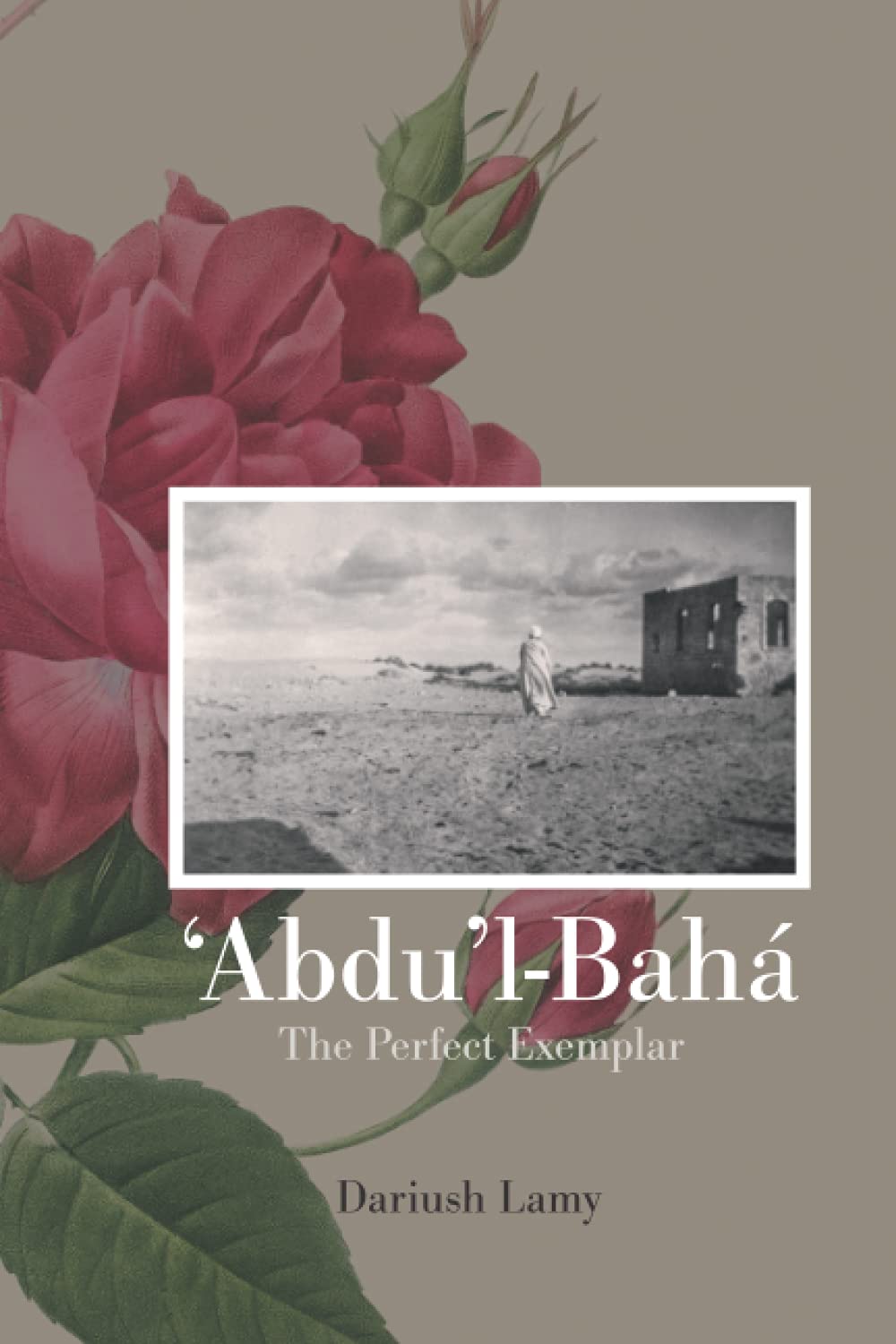
‘Abdu’l-Bahá: The Perfect Exemplar
by DARIUSH LAMY
As I finished reading Dariush Lamy’s recently-published book on ‘Abdu’l-Bahá, one word came to mind: compendium. This book is, as the preface makes clear, a compendium of the knowledge the author had gained about ‘Abdu’l-Bahá over the years, knowledge he was encouraged to set down by those who knew him. The title tells us that this book will focus on the Master as Perfect Exemplar. Since His life and ministry was just that, a perfect example of how to live and serve humanity, Lamy is justified in taking the panoramic view in this book of ‘Abdu’l-Bahá’s life and work.
Lamy looks at the station of ‘Abdu’l-Bahá, as well as His early life and His years of exile. He divides ‘Abdu’l-Bahá’s ministry into two parts: the first section covers His activities from the time of Bahá’u’lláh’s ascension up until World War I, while the second section covers the period during which ‘Abdu’l-Baha engaged in the development and preservation of Bahá’í schools and properties, including launching work on the Mother Temple of the West. Other chapters of the book cover the Master’s marriage and family life, His ascension, and His Writings.
The section on ‘Abdu’l-Bahá’s Writings will be a welcome read for those unfamiliar with the scope of His written work and for who wish to obtain an overview of it. Lamy’s periodization of the Master’s Writings is also a helpful tool, a kind of compass, for those who wish to orient themselves to the entire body of His work. Spanning from 1860-1892, the first period focuses on ‘Abdu’l-Bahá’s apprenticeship as writer, as He took direction and responded to the guidance of Bahá’u’lláh, producing a number of important works, including His timeless social treatise, Secret of Divine Civilization, and His invaluable account of the “historical episode” of the Báb in A Traveler’s Narrative.
In his overview of the second period of ‘Abdu’l-Bahá’s work as a writer, Lamy makes mention of the yet-to-be-translated Risáliy-i-Síyásíyyih, or Treatise on Politics, which serves as a kind of companion piece to Secret of Divine Civilization and explains the historical circumstances that generated this work. He also mentions two works with which Western readers will be familiar: The Seven Candles of Unity, which was revealed for Jane Elizabeth Whyte, the wife of the head of the Church of Liberty in Scotland, and the invaluable collections of table talks on diverse subjects recorded by Laura Dreyfus-Barney during her time in Akka, that were collected and was eventually published as Some Answered Questions. Mentioned in the third period of ‘Abdu’l-Bahá’s writings are the numerous talks He gave during His extensive travels, many of which were transcribed and translated into English under His own supervision, as well as such signal works as the Tablets of the Divine Plan, Memorials of the Faithful, and the Will and Testament.
Without doubt, Lamy’s overview, with its periodization, serves as a useful introduction to the Writings of ‘Abdu’l-Bahá and offers a kind of orientation for those who wish to embark on deeper study. However, while it is interesting to read a little bit about the various secretaries and translators who had the privilege of working with ‘Abdu’l-Bahá, I found this information less useful or relevant, especially since so little information is given. I felt the same way about the very brief accounts of the disciples of ‘Abdu’l-Bahá; surely this rich subject is deserving of a book of its own? Indeed, there is probably enough to say about these disciples to generate a book length manuscript on each. And, to me, the brief accounts, again only about a paragraph each, of the involvement of prominent contemporaries with ‘Abdu’l-Bahá seemed equally out of place in this book.
However, these are minor flaws — and not flaws at all if we remember the word “compendium.” This book is a collection of everything the author knows about the Master. Many photos, some drawings, and a timeline of ‘Abdu’l-Bahá’s life enrich this compendium of relevant facts, this overview of the Master’s life, ministry, and Writings. For those readers who wish to dip into various aspects of that life and work and for others who would like to get an overview of the landmark events in ‘Abdu’l-Bahá’s daily interactions, this book is a must. Beautifully produced by Kalimat Press, with an appealing front cover displaying a picture of the Master walking in what were once the undeveloped lands of Palestine affixed to gorgeous rose-colored peony in full bloom, this book will appeal to many readers. I came to it in my quiet hours, when I felt the need to ‘visit’ with the Master, and, inevitably when that ‘visit’ ended, I felt comforted, heartened, and inspired.
— SLH

